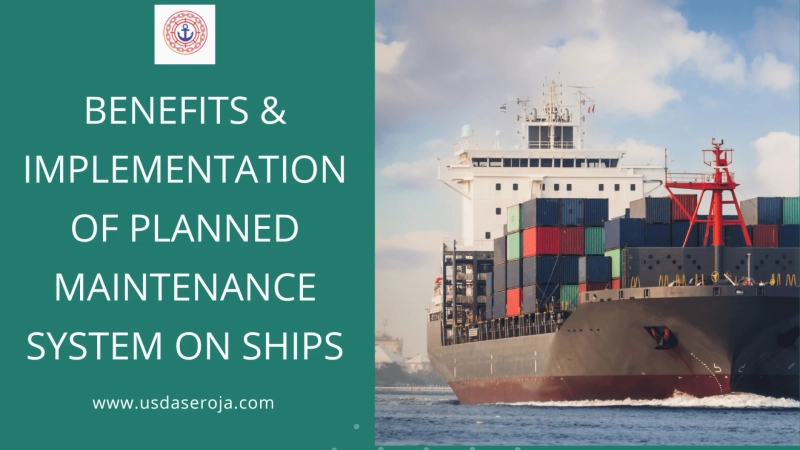A ship must be thoroughly inspected at regular intervals to make sure that it's in optimal condition. Each user must take up certain measures to coincide with the legislation of the ISM (International Safety Management). These checks enable ships to run efficiently.
However, regular maintenance tasks must be carried out to maintain a ship in good working condition. One maintenance method chosen by many shipping companies is the planned maintenance system.
What is a Planned Maintenance System?
The ISM requires all ships to have a fully integrated maintenance plan that is reviewed. A planned maintenance plan is an ISO system recognized by the IACS (International Association of Classification Society).
Planned Ship maintenance systems can be classified as Condition-based Maintenance and Predictive Maintenance. Condition-based maintenance systems analyze the system's condition as it is running, and it diagnoses and predicts its need based on their findings.
A Predictive Maintenance System is based on the algorithmic power of software that constantly monitors the readings of various devices to determine the optimal time to conduct maintenance. As its name suggests, the system predicts the moments when upkeep is required as opposed to the machine displaying any indication of needing it.
Benefits of Planned Maintenance System
Automation - Among the biggest advantages of a modern system is the capacity to automate a lot of the work. With automated tasks, the ship remains in good condition at all times.
Compliance - Planned maintenance programs are designed to ensure that machinery meets and maintains manufacturer requirements set by ISM and company standards.
Safety- Planned maintenance procedures ensure that all the machinery is maintained in a safe and operable condition, as faulty machinery often leads to serious accidents.
Efficiency- Ships that are safe and compliant function most efficiently. As the safety and structure of the machine improve, downtime is decreased. Without unexpected equipment breakdown as a direct result of thorough upkeep, locomotives operate in their finest form.
Implementing a Planned Maintenance System
Unlike a standard maintenance system that runs once or twice a decade, a planned maintenance system primarily focuses on the condition of machinery over time. Implementation of a planned maintenance system would be about having the ability to conduct timely maintenance work. The task will be completed based on the manufacturer's instructions on optimum working conditions, the machine's capacity, or regulations.
Conclusion:
In conclusion, a planned maintenance system is an important tool for ensuring the safety and efficiency of ships. It helps to identify and address potential problems before they become serious issues. The benefits of such a system are clear, and its implementation should be considered by all shipping companies.
PT USDA Seroja Jaya is the best shipbuilding company in Indonesia. They also offer the best ship maintenance and ship management services in Indonesia.
Disclaimer: The information provided in this content is just for educational purposes. Contact experts for more information about the Benefits & Implementation of the Planned Maintenance System on Ships.


